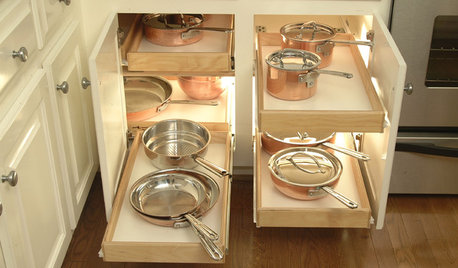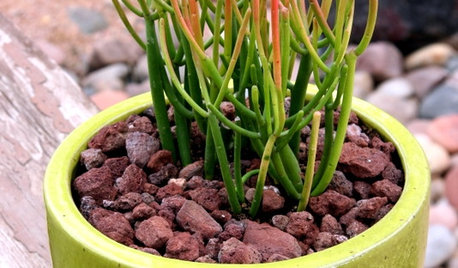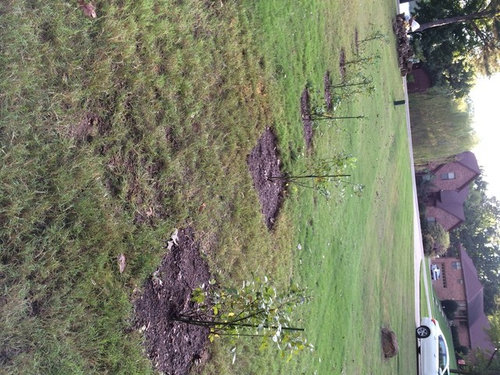Soluble Salts
Greg1978
10 years ago
Related Stories

KITCHEN DESIGNKitchen Sinks: Antibacterial Copper Gives Kitchens a Gleam
If you want a classic sink material that rejects bacteria, babies your dishes and develops a patina, copper is for you
Full Story
KITCHEN DESIGNSpring Clean Your Kitchen
Scour our 15 ways to ditch the dirt and get rid of the gunk, leaving your kitchen spick and span in time for spring
Full Story
HOUSEPLANTSHow to Grow Orchids Indoors
Orchids are the exotic aristocrats of the flower world and can make themselves comfortable in almost any home
Full Story
BATHROOM DESIGN13 All-White Bathrooms With Clean and Classic Style
Show immaculate taste in your bathroom with simply beautiful white walls, floors and finishes
Full Story
HOUSEKEEPINGThe Quick and Easy Way to Clean a Microwave
All you need is water and a couple of other natural ingredients to get your appliance sparkling and smelling fresh again
Full Story
HOUSEPLANTSPlay Up Some Fiddleleaf Figs for a Lively Indoor Tune
Strike a dramatic chord in a minimalist scene or a country note in a rustic setting — fiddleleaf fig plants harmonize with any style
Full Story
GOLD FOLIAGEGreat Design Plant: Milk Bush
With a rubbery texture and cartoon-like branches, this succulent brings an unusual, exotic energy to landscapes and container gardens
Full Story
SPRING GARDENINGHow to Grow a Rose Garden in Pots
Everything can come up roses, even without a plot of soil in sight. This step-by-step guide to growing roses in containers shows you how
Full Story
DECORATING GUIDESWhat You Need to Know Before Painting Brick
Sure, painted brick can be a great look. But you need to take some risks into account. Here's how to paint brick like a pro
Full StoryMore Discussions








TheMasterGardener1
ceth_k
Related Professionals
Marco Island Landscape Architects & Landscape Designers · Aloha Landscape Contractors · Fair Oaks Landscape Contractors · Galt Landscape Contractors · Lancaster Landscape Contractors · Miller Place Landscape Contractors · Rancho Santa Margarita Landscape Contractors · Secaucus Landscape Contractors · Clute Decks, Patios & Outdoor Enclosures · Del City Decks, Patios & Outdoor Enclosures · Pecan Grove Decks, Patios & Outdoor Enclosures · Roanoke Decks, Patios & Outdoor Enclosures · St. Louis Decks, Patios & Outdoor Enclosures · Sugar Land Decks, Patios & Outdoor Enclosures · West Bend Decks, Patios & Outdoor EnclosuresKimmsr
Greg1978Original Author
ericwi
toxcrusadr
TheMasterGardener1
Greg1978Original Author
Greg1978Original Author
Greg1978Original Author
lonmower
TheMasterGardener1
pnbrown
Greg1978Original Author
Kimmsr
TheMasterGardener1
pnbrown
Greg1978Original Author
pnbrown
ceth_k
TheMasterGardener1
pnbrown
TheMasterGardener1
Kimmsr
pnbrown
TheMasterGardener1
bear_with_me
pnbrown
Greg1978Original Author
bear_with_me
Greg1978Original Author
Greg1978Original Author
Greg1978Original Author